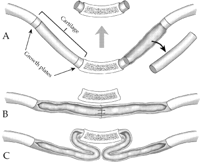
 |

|
 |
|

|
Главная страница >
Литература для специалистов >
Как не делать: Рестриктивная торакальная дистрофия после оперативного лечения воронкообразной деформации грудной клетки (pectus excavatum)
Как не делать: Рестриктивная торакальная дистрофия после оперативного лечения воронкообразной деформации грудной клетки (pectus excavatum)
 Interactive Cardiovascular and Thoracic Surgery 3:566��(2004) © 2004 European Association of Cardio-Thoracic Surgery How not to do it: restrictive thoracic dystrophy after pectus excavatum repair * Corresponding author. Tel.: +1����? fax: +1����?. (E-mail: tjohn@sanger-clinic.com). Received January 22, 2004; received in revised form June 8, 2004; accepted June 21, 2004
In the early 1980’s, attention was called to a group of patients who, after surgical repair of pectus excavatum, developed severe restrictive thoracic dystrophy. While the condition was coined by Haller as ‘acquired Jeune’s syndrome’ [2נ], because the components of Jeune’s syndrome extend beyond thoracic anatomy, [5] the nomer ‘acquired restrictive thoracic dystrophy’ (ARTD) appears to be more appropriate. In addition to a history of pectus excavatum repair at an early age, the condition is characterized by a narrow torso and a small, immobile, ‘peaked’ anterior chest wall with horizontal ribs. ARTD patients are dyspneic to various degrees, with limited physical abilities. Conventional X-rays confirm the reduced size of the thorax and may also show some recurrence of the deformity. CT scans often demonstrate cartilaginous-osseous growth behind the sternum (Fig. 1). Pulmonary function studies reveal decreased vital capacity and forced expiratory volume [3,4,6]. While the exact mechanism of the ARTD is not entirely clear, it has been postulated that the development of this condition could be due to the fact that these patients were operated upon before 4 years of age [4,6]. In our opinion, based on personal observations of five patients, review of their medical records, as well as on literary data and court testimonies, ARTD is caused by faulty surgical technique that stops development and freezes the chest wall, which if this occurs in a young child, naturally could be devastating. It has been recognized that rib resection may cause chest deformity and scoliosis in young patients, especially when it is done extensively [3,4]. Several authors also emphasize the need to preserve the growth plates during surgery [4,6,7]. Experimental data also suggest that longitudinal growth of a normal rib occurs mainly at the sternal end [8]. 

All reported patients with ARTD were operated upon at less than 4 years old, thus evidently, age is an important factor [4]. Damage, however, may be inflicted by overzealous rib resections at any age. Naturally, if the growth of the anterior chest wall is brought to a halt in a very young child, the damage will be greater than if it would have occurred later in life. We and others reported repairs of pectus excavatum in patients under 3 years of age, with good long-term results [7,10], though some argue that there is no necessity to do surgery prior to 5ף or even 12 years of age [3]. We believe that it is all a matter of balancing the severity of the deformity and advantages of early correction versus postponing the surgery due to the possibility of complications. Our preference is to do the correction at preschool age, but we will not hesitate to operate at any age if the deformity is severe [7]. The occurrence of ARTD could be prevented by observing some simple safeguards: (A) The subperichondrial resection of the cartilages should be adequate, but not overzealous. The posterior perichondrium should be preserved to allow regeneration. Sleeve stitching of the costal perichondrium facilitates remodeling of the neocartilage. Resection of the second rib should be an exception and reserved for the most severe anomalies. (B) A short segment of the cartilage should be left in continuity with the bony rib, and also with the sternum. If the extent of the deformity requires the removal of the entire length of the cartilage or part of the bony rib, this should be limited to a few, certainly not to all ribs. (C) Perichondrial strips from both sides should not be sutured together behind the sternum. Small tissue defects in the lowermost part of the operative field may be left alone or corrected with rectus-fascioplasty. The solution to the problem of preventing the development of acquired restrictive thoracic dystrophy after pectus excavatum repair is not to delay surgical intervention, but to do it appropriately. |
|
and promotion by A4-design |
|